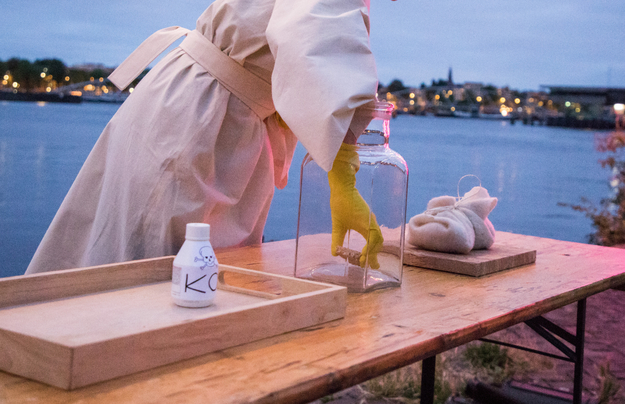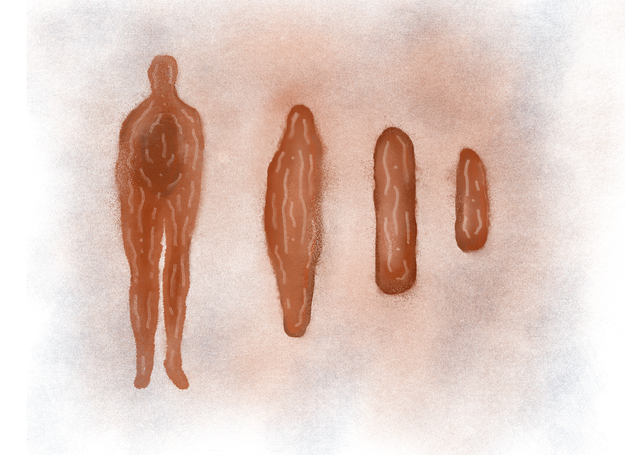Resomation is a low-energy, space-saving, and environmentally friendly way to return the compounds of the human body back into the earth's material cycles. The resulting effluent is loaded with nutrients that make it a powerful fertilizer, and the Carbon footprint is significantly smaller than e.g. in Cremation.
However, one catch remains: Fibrous plant-based fabrics – including common clothing materials like cotton – do not dissolve completely in the Resomation process. Hence, animal-based fabrics like silk and wool usually are employed for clothing the deceased for their resomation burial.
With Resomation, Saponification, and Taxidermy, Susanne Duijvestein performed a live resomation.







